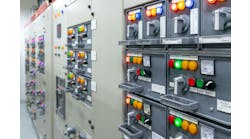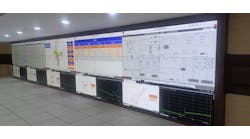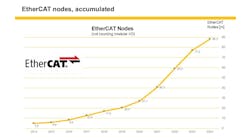ARC Reports "Staggering" Slowdown in Motion Control Market- May Prefigure Global Slowdown
This Press Release from ARC Advisory Group shows a sharp decline in the motion control market, especially in China and other low cost of manufacture countries in Asia. This is another prefiguration of what could be a serious coming downturn in the global economy. It seems that the only country that is not affected by the slowdown is the United States, where manufacturing, fueled by cheap natural gas and better trained English speaking labor, is having a real renaissance.
While the study is of discrete manufacturing and machine building, process automation cannot be far behind. Take note.
Staggering Declines in Asia Drive General Motion Control Market into Downturn
Dedham, Massachusetts; August 22, 2013: The market decline for General Motion Control (GMC) systems was affected by the sharp decline in capital equipment purchases during the second half of 2012. The rate of global growth slowed down, putting a damper on economic activity in the latter half of 2012. The sovereign-debt situation in Europe compounded with anticipation of another financial crisis slowed down investments in capital equipment. The global economy grew by 3.8 percent, which was not as strong as predicted. In Asia, the economic situation was not as robust as prior years. The motion control market in China sustained a decline along with Japan. Japan’s economy continued to experience aftershocks of the natural disaster. The North America and Latin America markets were the only regions to achieve a modest positive growth.
In 2012, the general relative market leadership positions have experienced considerable compression in market share separation. Notably, the largest declines in revenues were experienced by several of the leading Japanese suppliers with revenue declines on the average of 12 to 20 percent. The supply chain issues faced during the period after the tsunami resulted in indigenous Chinese suppliers capturing market share. The second tier suppliers are being reshaped by acquisitions according to a new ARC Advisory Group Global Market Research Study.
The market witnessed an increased number of acquisitions to allow motion control suppliers to place a stake in regions where they have little presence. In prior years the general trend in acquisitions was to extend product lines in an effort to support more comprehensive solutions. Now the market is witnessing very specific niche plays that are strategic in nature. Conversely, larger diversified businesses are acquiring niche motion control suppliers, viewing these simply as good investments providing a predictable, but steady ROI. “These dynamics on the supply side are creating a new competitive climate in the foreseeable future as motion control suppliers realign portfolios and centers of competency to capture growth in emerging markets and applications,” according to Research Director Sal Spada,[email protected], the principal author of ARC’s “General Motion Control Global Market Research Study” (www.arcweb.com/market-studies/pages/general-motion-control-systems.aspx).
Japanese Suppliers Burdened by High Value of Yen
China has become an important market for the Japanese suppliers; however, they have been burdened with a high valued Yen which prices many of the Japanese products outside of their domestic market. China is also one of the largest global producers and consumers of machinery which makes this a very important market for Japan. However, indigenous suppliers in China are also growing rapidly as they are now becoming part of the fabric of the overall motion control market. Japan’s motion control suppliers confronting the high valued Yen are establishing manufacturing operations outside of their domestic market to regain control of their manufacturing costs.
Machine Builders Incorporating Rapid Reconfiguration
Manufacturers are seeking to reconfigure the production lines automatically and more rapidly. This is driving the demand for low cost auxiliary axes on each machine. Low cost axes in conjunction with high performance servo solutions are driving up the axis count per machine. This is enabling the market to withstand declines in the price points in motion control platforms.
For more information on this study, go to: www.arcweb.com/market-studies/pages/general-motion-control-systems.aspx.



